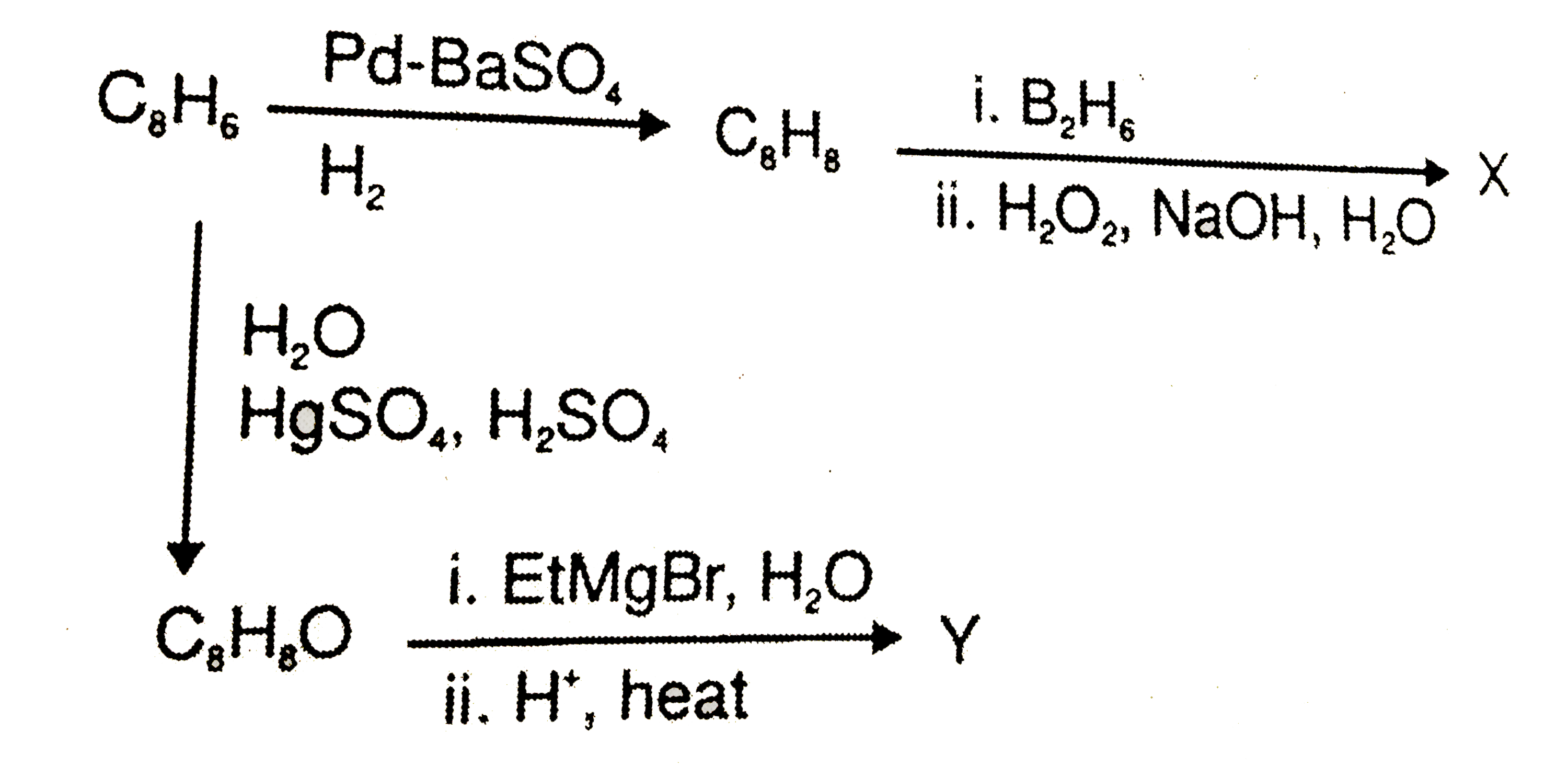Which of the following reactions of xenon compounds in not feasible?
XeF2+HF→H[XeF3]
XeF6+RbF→[XeF5][RbF2]
XeF4+PF5→[XeF3][PF6]
3XeF4+6H2O→2Xe+XeO3+12HF+1.5O2
The correct Answer is:A, B
To determine which of the reactions involving xenon compounds is not feasible, we will analyze each reaction step by step.
Step 1: Analyze the first reaction
Reaction: Xenon reacts with water to form xenon oxides.
- Feasibility: This reaction is feasible. Xenon can react with water to form xenon oxides (like XeO3). Xenon is known to have oxidation properties, allowing it to react with water.
Step 2: Analyze the second reaction
Reaction: XeF2 + HF → HXEF3.
- Feasibility: This reaction is also feasible. In this case, xenon difluoride (XeF2) can react with hydrogen fluoride (HF) to form a higher fluorinated xenon compound, such as xenon trifluoride (XeF3). The reaction is consistent with xenon's ability to form various fluorides.
Step 3: Analyze the third reaction
Reaction: XeF6 + RbF → RbXeF7.
- Feasibility: This reaction is not feasible. Although xenon hexafluoride (XeF6) can react with rubidium fluoride (RbF), the formation of RbXeF7 is not a common or expected outcome. The product does not align with known chemistry of xenon compounds, indicating that this reaction is unlikely to occur.
Step 4: Analyze the fourth reaction
Reaction: XeF4 + PF5 → XeF3 + PF6.
- Feasibility: This reaction is feasible. Xenon tetrafluoride (XeF4) can react with phosphorus pentafluoride (PF5) to yield xenon trifluoride (XeF3) and phosphorus hexafluoride (PF6). This reaction is consistent with the known oxidation properties of xenon.
Conclusion
After analyzing all the reactions, we find that the reaction involving XeF6 and RbF to form RbXeF7 is not feasible. Therefore, the answer is:
The reaction that is not feasible is: XeF6 + RbF → RbXeF7.
---
Reaction: Xenon reacts with water to form xenon oxides.
Reaction: XeF2 + HF → HXEF3.
Reaction: XeF6 + RbF → RbXeF7.
Reaction: XeF4 + PF5 → XeF3 + PF6.
After analyzing all the reactions, we find that the reaction involving XeF6 and RbF to form RbXeF7 is not feasible. Therefore, the answer is:
Topper's Solved these Questions
- p-BLOCK ELEMENTSBOOK - VK JAISWAL ENGLISHCHAPTER - p-BLOCK ELEMENTSEXERCISE - MATCH THE COLUMN
24 Videos
- p-BLOCK ELEMENTSBOOK - VK JAISWAL ENGLISHCHAPTER - p-BLOCK ELEMENTSEXERCISE - ASSERTION REASON TYPE QUESTIONS
24 Videos
- p-BLOCK ELEMENTSBOOK - VK JAISWAL ENGLISHCHAPTER - p-BLOCK ELEMENTSEXERCISE - LEVEL 3 (PASSAGE TYPE)
17 Videos
- METALLURGYBOOK - VK JAISWAL ENGLISHCHAPTER - METALLURGYEXERCISE - ASSERTION-REASON TYPE QUESTIONS
29 Videos
- PERIODIC PROPERTIESBOOK - VK JAISWAL ENGLISHCHAPTER - PERIODIC PROPERTIESEXERCISE - MATCH THE COLUMN
11 Videos
Similar Questions
Knowledge Check
Which one of the following reactions of xenon compounds is not feasible ?
AXeO3+6HF→XeF6+3H2OB3XeF4+6H2O→2Xe+XeO3+12HF+1.5O2C2XeF2+2H2O→2Xe+4HF+O2DXeF6+RbF→Rb[XeF7]Which of the following reactions is not feasible?
A B
B C
C D
D
Which of the following reactions are not feasible?
A B
B C
C D
D
Which of the following reactions are feasible ?
View SolutionWhich of the following reaction is not feasible?
View SolutionIn the following reactions :

Compound X is
View SolutionWhich of the following xenon-OXO compounds may not be obtained by hydrolysis of xenon fluorides?
View SolutionWhich of the following reactions is/are feasible?

View Solution

